Key Takeaways
Hello Heart Hero. Hearing a medical term like "sinus node dysfunction" can feel a little intimidating, especially when you're just trying to find clear, straightforward answers. We get it. This guide is here to walk you through what's going on with your heart in simple terms, without all the confusing medical jargon.
What Is Sinus Node Dysfunction
Sinus node dysfunction, sometimes called sick sinus syndrome, simply means your heart's natural pacemaker isn't working quite right. Think of your sinus node as the heart's own internal drummer, responsible for setting a steady, reliable beat. When it runs into trouble, it can't generate or send out the electrical signals that tell your heart when to pump.
This little hiccup in communication can cause your heartbeat to become too slow, too fast, or just plain erratic. It's a condition that often pops up as we get older, when the heart's "wiring" can start to show a bit of wear and tear.
Understanding Your Heart's Pacemaker
Imagine a tiny, expert conductor leading a grand orchestra. That's your sinus node. Its only job is to send out a small electrical spark that tells your heart muscles when to contract and push blood through your body. This spark creates your heartbeat.
With sinus node dysfunction, that conductor might miss a cue, slow down the tempo unexpectedly, or have trouble getting the message out to the orchestra. This simple visual shows how a perfectly normal signal can get disrupted.
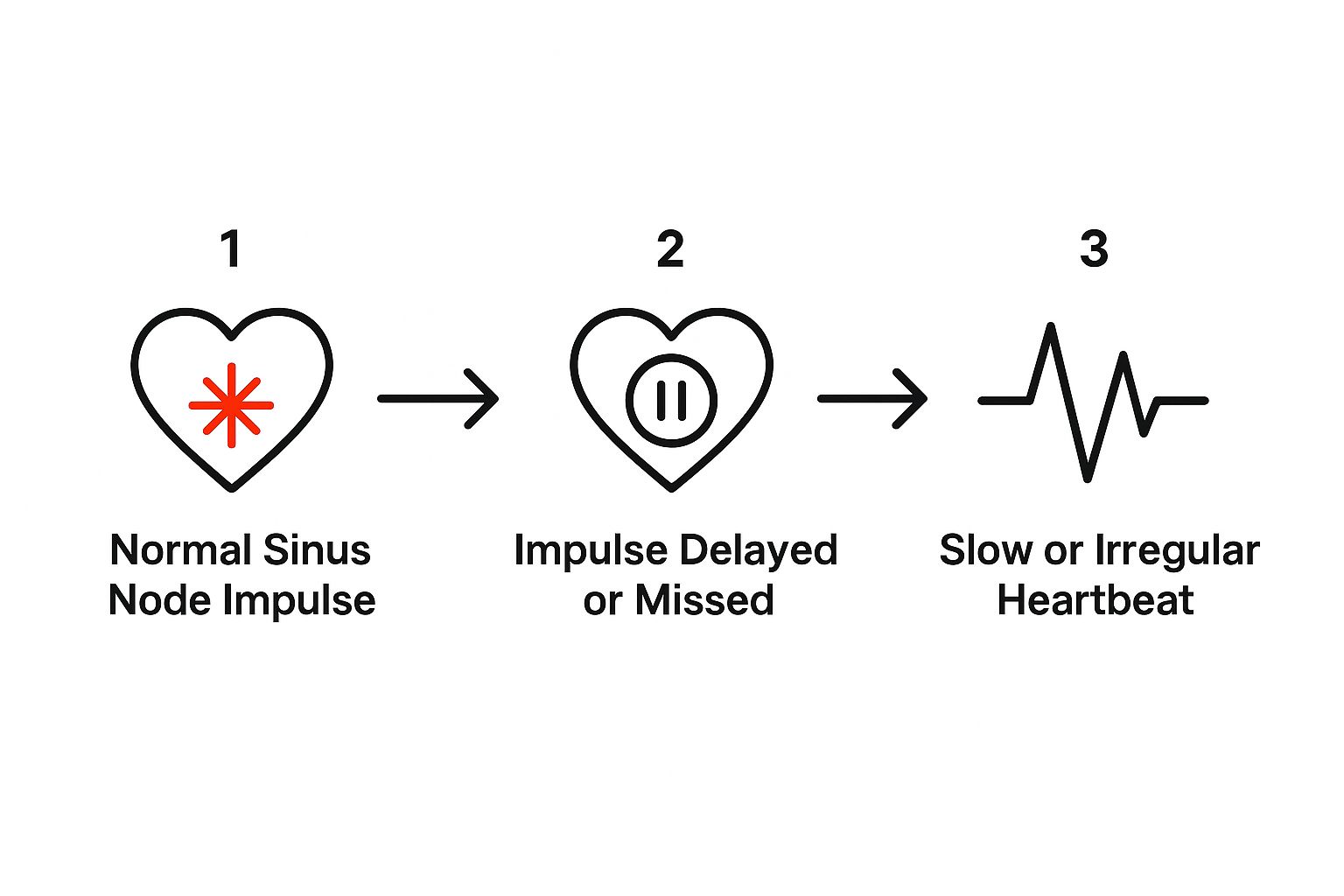
As you can see, the process starts with a normal impulse that gets delayed or even missed entirely, which ultimately throws off the heart's rhythm.
This condition isn't rare, and its likelihood goes up quite a bit with age. In fact, research shows that sinus node dysfunction is most common in people between 70 and 80 years old. The median age for needing a pacemaker for it is right around 74 years. You can learn more about the research on sinus node dysfunction and age here.
The core issue in sinus node dysfunction is a communication problem. Your heart's natural timekeeper struggles to send the right signals at the right time, leading to a rhythm that is out of sync.
For a quick overview, this table breaks down the essentials of sinus node dysfunction.
Sinus Node Dysfunction at a Glance
Think of it as a faulty electrical system in the heart that just needs a little help getting back on track.
Key Characteristics of Sinus Node Dysfunction
It's helpful to break down what this condition really means for your heart's rhythm. While everyone's experience is different, the dysfunction usually shows up in a few distinct ways:
- Sinus Bradycardia: This is a fancy way of saying you have a consistently slow heart rate, often dipping below 60 beats per minute. While a slow heart rate can be perfectly normal for athletes, in this case, it’s caused by the sinus node firing too slowly.
- Sinus Arrest or Pause: This happens when the sinus node temporarily stops firing altogether. It causes a skipped beat or a long, noticeable pause between beats, which can lead to feeling lightheaded or dizzy.
- Tachy-Brady Syndrome: This is a confusing mix where the heart flip-flops between beating too slowly (bradycardia) and way too quickly (tachycardia). This rapid switching is often what causes very noticeable palpitations or dizziness.
Getting familiar with these patterns is the first step toward understanding what might be happening and feeling more prepared for conversations with your doctor.
How Your Heart’s Natural Pacemaker Works
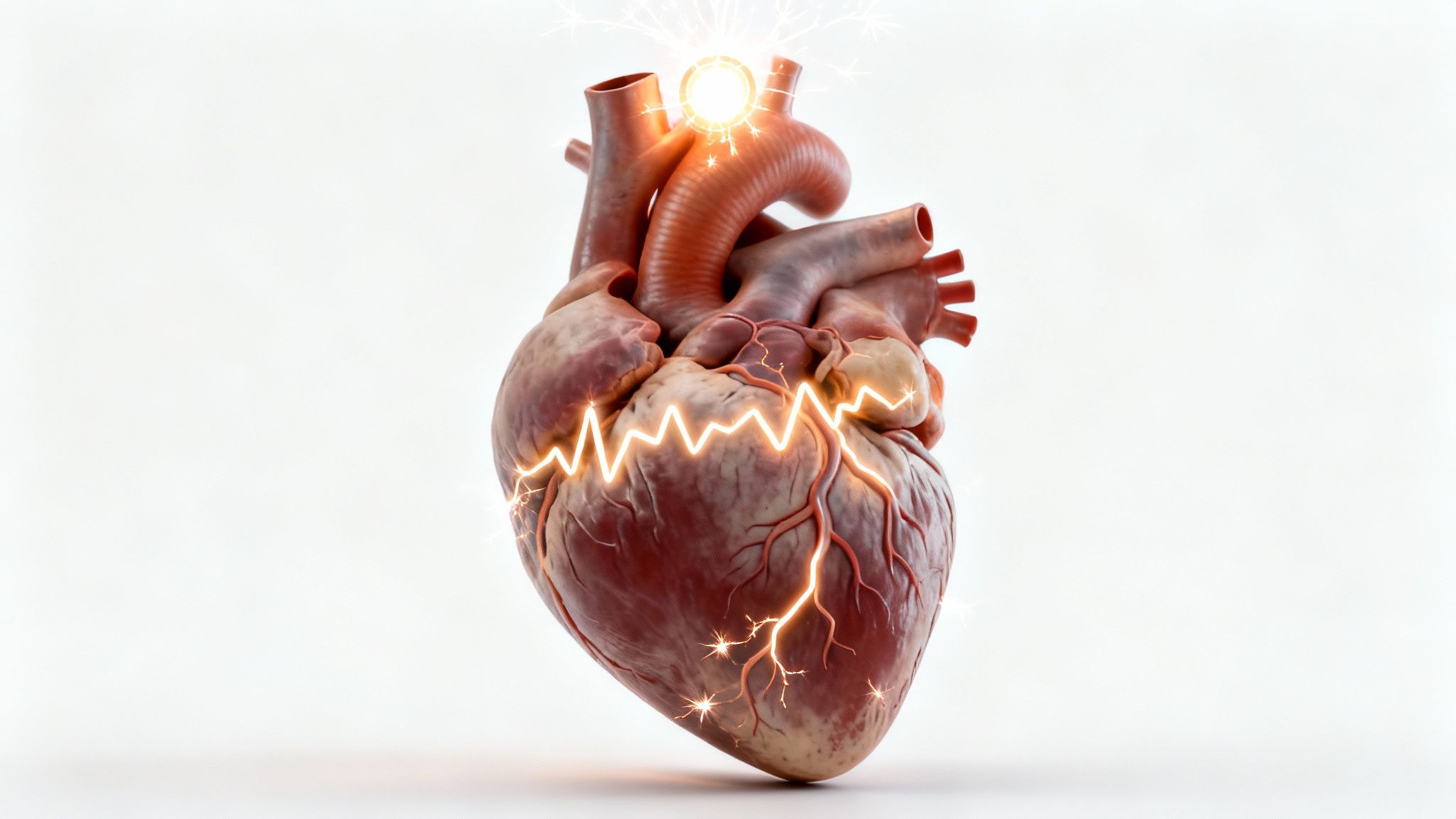
To really get what sinus node dysfunction is, it helps to first understand the beautiful and precise way your heart works when everything is in perfect rhythm. It’s a remarkable system, and you don’t need a medical degree to appreciate its elegance.
Think of your heart’s sinoatrial (SA) node, or sinus node, as the heart's own master conductor. This tiny cluster of specialized cells, located in the upper right chamber (the right atrium), has one crucial job: to kick off every single heartbeat.
This sinus node generates a small electrical spark that sets the pace for your entire heart. It’s your body’s own natural, built-in pacemaker, tirelessly working from your very first heartbeat to your last.
The Electrical Journey of a Single Heartbeat
Once the sinus node fires its spark, that electrical signal doesn't just stay put. It travels on a specific path, like a wave, across the heart's upper chambers, the atria. This is what causes the atria to squeeze and push blood down into the lower chambers, the ventricles.
This initial electrical wave is so important that it creates a specific bump on an ECG reading, known as the P wave. That little signal is the very first sign of a healthy, coordinated heartbeat.
This journey happens in a fraction of a second. The signal then pauses for a moment at another key point called the atrioventricular (AV) node. This brief pause is crucial: it gives the ventricles just enough time to fill up with blood before they’re told to pump.
Your heart’s electrical system is like a perfectly timed relay race. The sinus node starts the race, passing the baton (the electrical signal) smoothly from one part of the heart to the next, ensuring every chamber works in harmony.
After the pause, the signal continues down specialized pathways to the ventricles. This final leg of the journey tells the powerful lower chambers to contract, pumping blood out to your lungs and the rest of your body. This is the main pumping action that you feel as your pulse.
What Does a Normal Rhythm Look Like
So, what’s a "normal" rhythm set by this natural pacemaker? For most adults at rest, the sinus node fires at a rate of 60 to 100 times per minute. Each spark is evenly spaced, creating a steady, predictable beat.
This rhythm isn’t rigid, though. It’s designed to adapt to what your body needs.
- When you exercise: Your brain tells the sinus node to speed up, delivering more oxygen-rich blood to your muscles.
- When you rest or sleep: It gets the signal to slow down, conserving energy.
- When you’re stressed or excited: Adrenaline causes it to fire more rapidly.
This constant adjustment is a sign of a healthy, responsive heart. The problem in sinus node dysfunction isn't just about speed, but about the node's ability to fire correctly and consistently.
You can get a better sense of your heart's electrical signals by understanding what P waves look like in your watch ECG, which offers a window into this very first step of your heartbeat.
Why This Conductor Is So Important
The sinus node is the ultimate leader of your heart's rhythm. When it works correctly, the entire system flows seamlessly. The atria and ventricles contract in perfect sequence, ensuring blood moves efficiently through your body.
But if this conductor starts to miss beats, slow down the tempo, or send out erratic signals, the whole orchestra falls out of sync. This is the heart of the issue with sinus node dysfunction. The problem starts right at the source, with the very spark that is supposed to initiate a healthy heartbeat.
Understanding this normal process is the key to seeing why a problem with the sinus node can cause symptoms like dizziness or fatigue. If the initial signal is weak or unreliable, the rest of the system can't do its job properly.
Recognizing the Symptoms of Sinus Node Dysfunction

It can be unsettling when your body starts sending signals that something isn't quite right. The signs of sinus node dysfunction are often sneaky and easy to dismiss as just being tired or a normal part of getting older. We want to help you connect the dots between how you're feeling and what might be happening with your heart's rhythm.
When your heart’s natural pacemaker, the sinus node, slows down, it can't pump enough oxygen-rich blood to your brain and body. This is the root cause of the symptoms you may be experiencing. It’s not just in your head; there's a real, physical reason you might feel off.
The Most Common Signs Your Body Might Send
The symptoms of sinus node dysfunction can vary a lot from person to person. You might feel them constantly, or they may come and go without warning. Here are some of the most common signs to watch for.
- Persistent Fatigue: This isn't just feeling tired after a long day. It's a deep, lasting exhaustion that doesn't seem to get better with rest. You might feel like you're constantly running on an empty tank.
- Dizziness or Lightheadedness: A common complaint is feeling woozy or like the room is spinning, especially when you stand up too quickly. This happens because your brain isn't getting a steady supply of blood.
- Fainting or Near-Fainting Spells (Syncope): If your heart rate drops very low or pauses for a few seconds, it can cause you to briefly lose consciousness. This is one of the more serious symptoms because of the risk of injury from a fall.
- Shortness of Breath: You might find yourself getting winded from simple activities, like walking up a flight of stairs or carrying in the groceries. This happens when your heart can't pump blood efficiently enough to meet your body's oxygen demands.
- Palpitations or a "Fluttering" Sensation: This can feel like your heart is skipping beats, racing, or pounding in your chest. These feelings are often unsettling and can happen without any obvious trigger.
What Is Tachy-Brady Syndrome?
Sometimes, the sinus node doesn't just slow down; it becomes completely erratic. This can lead to a specific type of sinus node dysfunction called tachy-brady syndrome. The name itself gives a clue to what's going on: "tachy" means fast, and "brady" means slow.
In this condition, your heart rhythm can swing wildly between a very slow rate (bradycardia) and a very fast, often chaotic rate (tachycardia), like atrial fibrillation. This chaotic flip-flopping is what often causes the most noticeable and disruptive symptoms, such as severe dizziness or intense palpitations.
Think of it like a car that can't maintain a steady speed. One moment it's crawling along, and the next it's suddenly lurching forward. This unpredictable switching can make you feel unstable and anxious.
Understanding this pattern is important because it explains why you might feel both sluggish and uncomfortably racy at different times.
The Connection to Other Heart Conditions
It's also important to know that sinus node dysfunction often doesn't exist in a vacuum. It can be closely linked to other health issues, which is why recognizing the symptoms is so critical.
The condition is strongly associated with other cardiac problems, particularly atrial fibrillation (AFib) and heart failure. For example, in patients who have had AFib for a long time, the incidence of developing sinus node dysfunction can climb to around 45%. In populations with heart failure, a slow heart rate from this condition is a major contributor to serious events.
Other risk factors like high blood pressure and a higher BMI can also play a role. You can explore the full findings on these connections to better understand the broader context of your heart health.
What Causes the Sinus Node to Slow Down
When you learn that your heart’s natural pacemaker might be struggling, it's completely natural to ask, "Why is this happening to me?" Your mind can race with questions, and it’s easy to feel worried. Please know that in most cases, the reasons behind sinus node dysfunction are things you couldn't have prevented.
The most common reason is simply the passage of time. Think of your heart's electrical wiring like the wiring in a beloved old house. After decades of faithful service, it can develop some wear and tear. This age-related change involves the buildup of fibrosis, or scar tissue, in and around the sinus node.
This scarring can make the node's specialized cells less effective at generating or sending out those critical electrical signals, leading to a slower or more erratic heartbeat. It’s not something you did wrong; it's a natural process that happens in some hearts more than others.
Key Factors That Can Affect Your Sinus Node
While aging is the primary driver, other factors can sometimes contribute to or worsen sinus node dysfunction. Understanding these can help you have more informed conversations with your care team and give you a fuller picture of your heart's health.
- Underlying Heart Conditions: Damage from a previous heart attack, heart surgery, or conditions like coronary artery disease can affect blood flow to the sinus node, impacting its function.
- Certain Medications: Sometimes, the medicines we take for other health issues can have an unintended side effect on the heart's rhythm. Beta-blockers and calcium channel blockers, often prescribed for high blood pressure, are common examples.
- Inflammatory Conditions: Diseases that cause inflammation throughout the body, like certain autoimmune disorders, can sometimes affect the heart tissue, including the sinus node.
- Electrolyte Imbalances: Your heart's electrical system relies on a precise balance of minerals like potassium and calcium in your blood. If these levels are off, it can interfere with normal signaling.
It's important to remember that these factors often work together. For a deeper dive into what causes a slow heartbeat in general, you can check out our guide on what causes bradycardia.
The Role of Genetics and Family History
You might also be wondering if this condition runs in the family. The answer is yes, genetics can play a significant role. If a close relative like a parent or sibling was diagnosed with sinus node dysfunction, your own risk may be higher. This is one reason why knowing your family's health history is so empowering.
A large nationwide study found that first-degree relatives of patients who needed a pacemaker for sinus node dysfunction had a significantly higher risk of needing one themselves. This link was even stronger when the family member was diagnosed at a younger age, suggesting a clear hereditary component. You can discover more insights about this genetic connection.
Understanding the cause is not about assigning blame. It's about gathering knowledge. Knowing that factors like aging and genetics are major contributors can help relieve feelings of guilt and focus your energy on moving forward.
By recognizing these potential causes, you're taking an important step. You are no longer in the dark. Instead, you're equipping yourself with the information needed to understand your body and advocate for your health with clarity and confidence.
How Doctors Diagnose Your Heart Rhythm
Trying to get to the bottom of symptoms that come and go can feel like an incredibly frustrating puzzle. We get it. Navigating medical tests can be overwhelming, and it's easy to feel skeptical about finding clear answers. This section is all about demystifying the diagnostic process, making it transparent so you feel prepared and more in control of your health journey.
The path to diagnosing sinus node dysfunction almost always starts with a detailed chat with your doctor. They'll want to hear all about your symptoms, your family's health history, and any medications you’re taking. Your personal experience is the most important clue, so being as open and specific as you can be is a huge help.
The First Step: The Electrocardiogram (ECG)
The main tool for looking at your heart's electrical activity is the electrocardiogram, often called an ECG or EKG. It's a quick, totally painless test that gives your doctor a snapshot of your heart's rhythm in that exact moment. Small sensors are placed on your chest to pick up the electrical signals that make your heart beat.
An ECG can immediately show if your heart rate is too slow (bradycardia), which is a classic sign of sinus node dysfunction. The catch? Since symptoms often play hide-and-seek, a standard ECG done in a doctor’s office might look completely normal if you aren't feeling symptoms right then. If you're curious to understand what your doctor sees, you can learn more about how to read an ECG and what those lines and waves really mean.
Catching Symptoms as They Happen
Because sinus node dysfunction can be so elusive, your doctor will likely want to see what your heart is doing over a longer stretch of time. This is where portable monitors are essential. They're designed to catch those sneaky heart rhythm irregularities that a one-off ECG might miss.
There are a few common types of these take-home monitors:
- Holter Monitor: This is a small, wearable device that records your heart's rhythm continuously for 24 to 48 hours. You just go about your normal daily life while it captures every single heartbeat, giving your doctor a full picture of your heart's activity over a day or two.
- Event Monitor: If your symptoms pop up less frequently, an event monitor might be the way to go. You can wear this device for several weeks or even a month. Instead of recording constantly, you press a button to start recording when you feel a symptom like dizziness or palpitations. Some newer models can even detect and record abnormal rhythms on their own.
The whole point of these monitors is to match your symptoms directly to what your heart was doing at that exact time. This connection is the key to an accurate diagnosis.
Other Diagnostic Tools in the Toolbox
While ECGs and portable monitors are the go-to tools, your doctor might suggest other tests to get a complete picture of your heart's health and rule out other things that could be causing your symptoms.
A common one is an exercise stress test. For this test, you'll walk on a treadmill while hooked up to an ECG. The goal is to see how your heart responds when it has to work harder. It helps show if your heart rate increases the way it should with activity or if it stays sluggish and slow.
Your active participation in all of this is vital. Keeping a simple symptom diary while wearing a monitor can provide priceless insights. Just jotting down what you were doing and how you felt when a symptom occurred helps your doctor connect the dots between the ECG data and your real-world experience. You are a key partner in solving this puzzle.
Taking Control by Monitoring Your Heart at Home
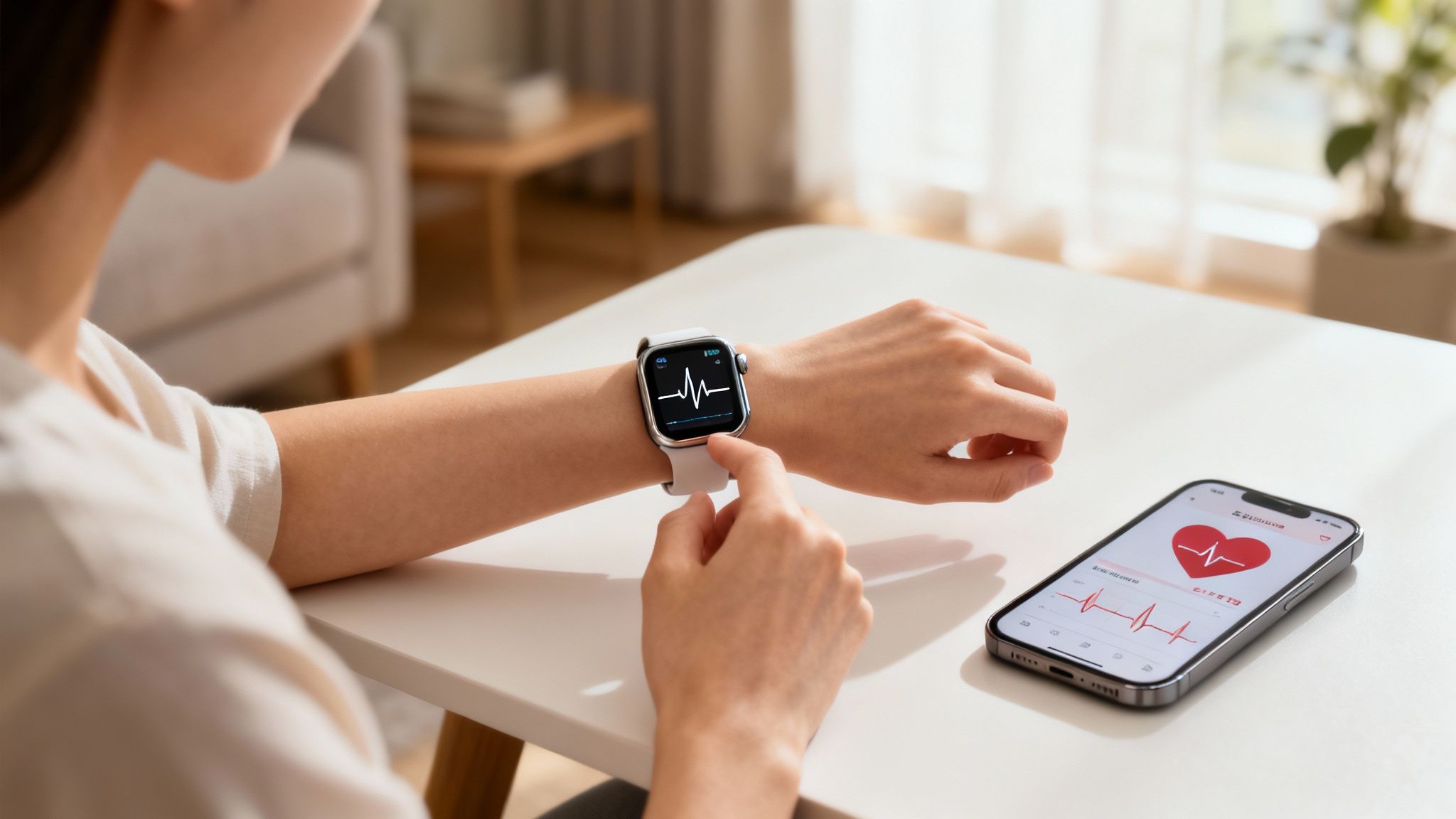
Getting a diagnosis like sinus node dysfunction isn't the end of the story; it's the beginning of a new chapter in your health journey. While a label might give you some answers, the real power comes from understanding and managing your health day-to-day. This is where you can truly take back a sense of control and find some much-needed peace of mind.
At-home heart monitoring has completely changed the game. It’s a shift from being a passive patient to becoming an active partner in your own healthcare. You no longer have to wait for your next doctor's appointment to find out what's going on. Instead, you can gather valuable insights right from your wrist, any time you feel a symptom or simply want some reassurance.
This puts you in the driver's seat, allowing you to build a detailed picture of your heart's behavior over time, something a single, brief test in a clinic could never capture.
Turning Data into Understanding
Modern tools make keeping an eye on your heart incredibly simple. Smartwatches and personal ECG devices let you record your heart's electrical rhythm in just a few seconds. But what do you do with that squiggly line on the screen? This is where true understanding comes into play.
Services like Qaly are designed to bridge the gap between your personal device and professional expertise. Instead of trying to guess what your ECG is telling you, you can have it analyzed by a certified expert who provides a clear, easy-to-understand report. It's all about transforming confusing raw data into actionable knowledge and genuine reassurance.
This isn’t just about spotting potential problems. It's also about confirming when everything is okay, which can be a huge relief and significantly reduce health-related anxiety. For anyone curious about this technology, you can learn more about using a portable electrocardiogram monitor to stay on top of your heart health.
The Power of Consistent Monitoring
Checking in with your heart rhythm regularly offers benefits that go far beyond a single ECG reading. Over time, you create a baseline, a personal map of what’s normal for you. As you get comfortable with monitoring, it's also helpful to learn what makes up a healthy resting heart rate, like knowing a good sleeping heart rate.
By monitoring your heart at home, you become the most informed expert on your own body. This knowledge allows you to have more productive, data-driven conversations with your doctor.
Here’s how consistent monitoring puts you and your care team in a better position:
- Track Your Condition: See how your heart rhythm behaves during different activities, at various times of the day, or in response to stress.
- Evaluate Treatments: If you're on medication, regular monitoring can help show if it's working effectively to manage your heart rate.
- Catch Changes Early: You're more likely to notice new patterns or an increase in symptoms sooner, allowing for quicker intervention if it's ever needed.
- Build Confidence: When you're armed with information, you can feel more secure and less anxious about what’s happening inside your body.
Ultimately, at-home monitoring is about so much more than just technology. It’s a proactive step toward living well with sinus node dysfunction, giving you the tools and the confidence to navigate your health journey with clarity and calm.
Common Questions About Sinus Node Dysfunction
Hearing a medical term like "sinus node dysfunction" for the first time can definitely send your mind spinning with questions. That's completely normal. Feeling uncertain is just part of the process, and you're not the only one looking for clear, straightforward answers.
We've pulled together some of the most common questions people ask when they first learn about this condition. Our aim is to give you information that helps you feel more grounded and less anxious as you figure out what this means for you.
Is Sinus Node Dysfunction a Dangerous Condition?
While the name might sound alarming, for most people, sinus node dysfunction is a condition that moves very slowly. Often, the symptoms are manageable things like fatigue.
The main concern really comes up if the heart rate drops so low that it causes fainting, which doctors call syncope. This is mainly because of the risk of getting injured from a fall. In some situations, especially if other heart conditions are in the mix, it can lead to more complex issues.
The key is getting a solid diagnosis and working with your doctor on a plan. Modern treatments, like pacemakers, are incredibly effective at managing symptoms and letting people live full, active lives.
Can Lifestyle Changes Cure Sinus Node Dysfunction?
Lifestyle changes are a huge plus for your overall heart health, but they typically can't cure the root cause of SND. This is especially true if it's from age-related scarring of the heart tissue, which can’t be reversed.
But that doesn't mean simple actions don't make a big difference in supporting your heart.
Think of lifestyle changes as a powerful ally to your medical treatment. While they may not reverse the condition, they strengthen your heart and improve your overall well-being, making your body more resilient.
Keeping your blood pressure in check, staying at a healthy weight, and not smoking are all vital. It’s also incredibly important to go over all your medications with your doctor, since some drugs can actually make a slow heart rate worse.
Will I Definitely Need a Pacemaker for SND?
Getting diagnosed with sinus node dysfunction doesn't automatically mean you're getting a pacemaker. The decision almost always comes down to one thing: how the condition is affecting you and your quality of life.
If your symptoms are mild and aren't causing major problems like fainting spells or severe fatigue, your doctor might just recommend a period of careful monitoring. A pacemaker is usually only brought up when a slow heartbeat is directly causing disruptive symptoms that get in the way of your daily life or create a safety risk.
Ultimately, the goal of a pacemaker isn't just to fix a number on a chart; it's to help you feel better and live more freely.
At Qaly, we believe that understanding your heart shouldn't be confusing or stressful. Get peace of mind by having your smartwatch ECGs analyzed by certified experts, with clear results delivered right to your phone in minutes. Learn more at https://www.qaly.co.
Heart feels off? Get your ECGs read by certified experts within minutes, for peace of mind ❤️
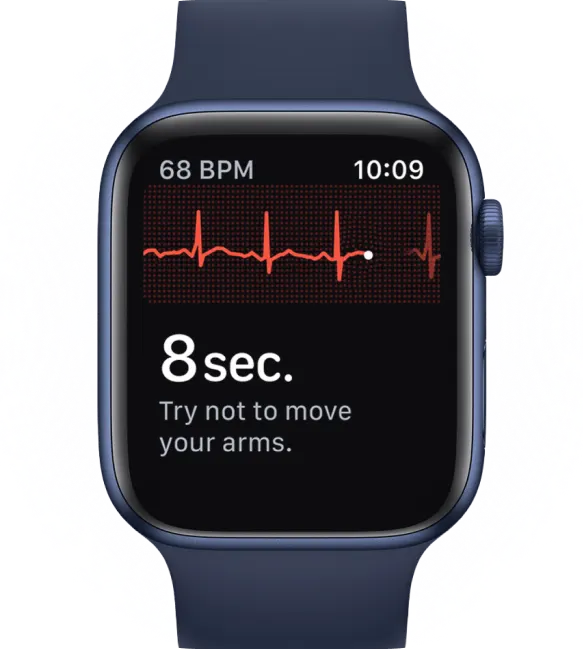


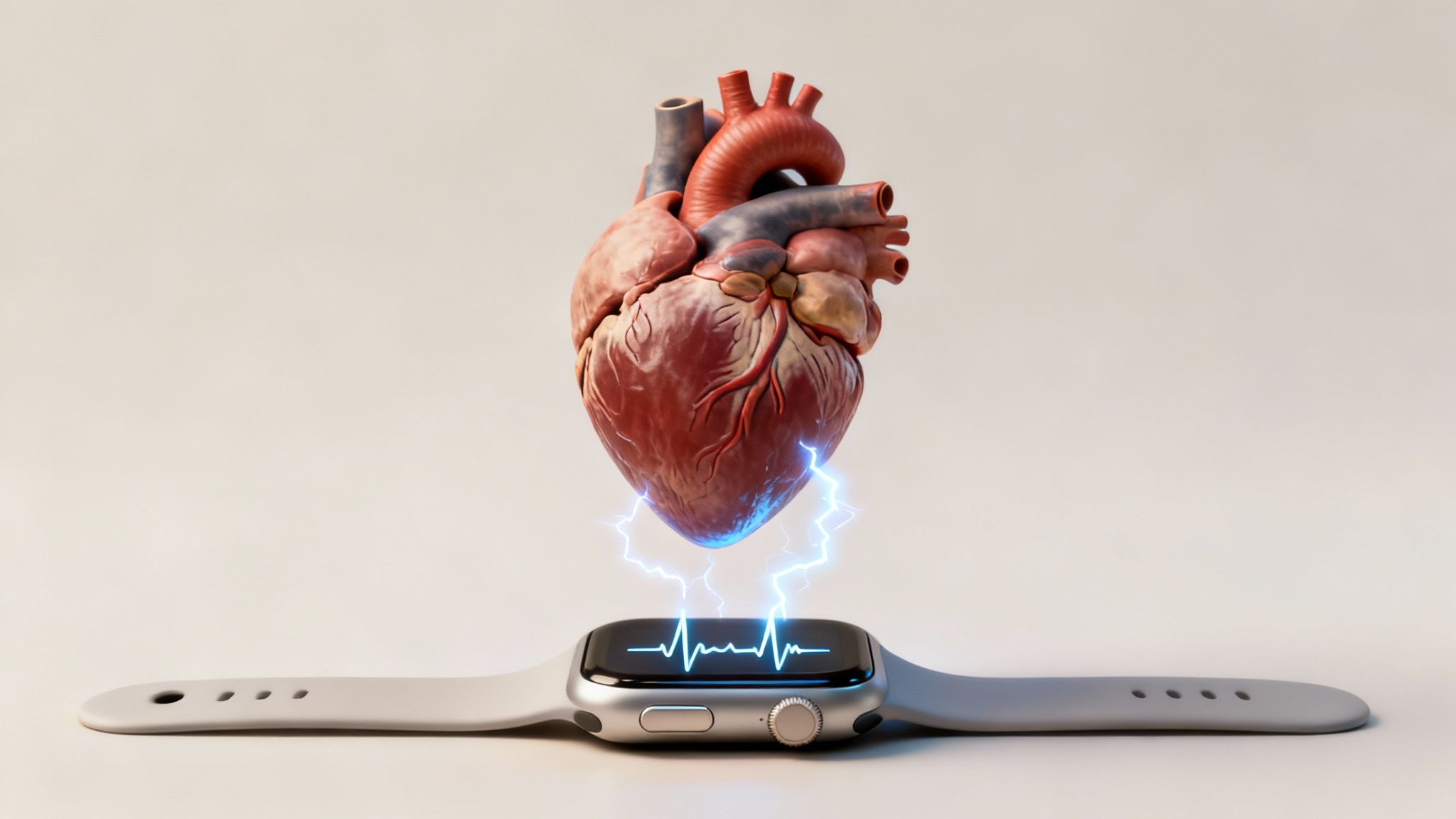






.png)
.png)